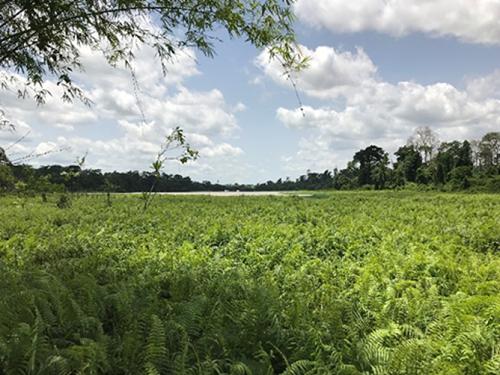Eugene Gakpo Alhassan
This project aims to develop a sustainable management plan for Owabi Wildlife Sanctuary (both the inner site and the catchment area) using integrated ecosystem assessment. This will spell out the ecosystem services deriving from the area as well as its use limit to sustainably manage these services for continuous benefits. Also, this project seeks to establish the synergies and conflicts among users of these ecosystem services to know who has the power, interest and influence in the area. This will provide insightful information for policy makers on their management decisions. More so, the project seeks to provide public education to promote community awareness about the importance of the area and to stop or minimize destruction.

The aquatic vegetation's of the Sanctuary.
Ecosystem services simply mean all the benefits people derive from the ecosystem and Owabi Wildlife Sanctuary provides such services to its beneficiaries. Although the sanctuary is a small protected area, it houses different fauna and flora species listed under IUCN red list (vulnerable). This includes but not limiting to Manis tricuspis, Nauclea diderrichii, Entandrophragma angolense, Entandrophragma utile, Pterygota macrocarpa and Albizia ferruginea.

Spotted Mona Monkey.
It also protects migratory bird species with 13 families listed in appendix II of the Convention on International trade in Endangered Species (CITES) and provide avenue for bird watching experiences.
It was designated as a wetland of international importance under Ramsar Convention in 1988 and therefore protects wetlands within it. Moreover, it also houses the Owabi Lake which was dammed to provide supplementary water supply (about 12 million litres/day) to the people of Kumasi and its environs since 1970s.
However, the sanctuary is seriously under threat (both the inner and the catchment area). Even though some part of the area is protected (inner area), it faces severe interrelated issues from population pressure, poaching, illegal logging, land tenure, land use practices and local development which inevitably have opposite bearing with its management (FC, 2014). The area is being encroached by farming activities, sand wining and locating of land for local development which threaten the flora and fauna species as well as having great impact on the quality of water supplied by the dam (Ameyaw & Dapaah, 2017). Therefore, there is the need to review its management in order to provide a more sustainable management plan for the continuous benefit of the Sanctuary. Assessing the consequences of this sustainable management plan will help involved stakeholders like the forest commission, Ghana Water Company, Nwabiagya distrist assembly, fringe communities to benefit from the area without jeopardizing the integrity of the Sanctuary as a whole.